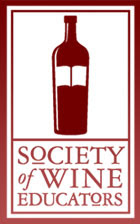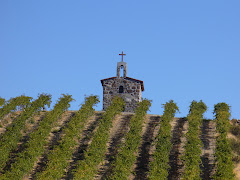 One of the biggest gripes I have as a retail wine buyer is when a producer gets it in their head to “add” to their line of wines. I can understand the natural evolution and growth in business, but when you are a producer of let’s say, 6 wines, decides to suddenly double their line, or when they have wines in the $9.99 price point and $15.99 price point, and they suddenly decide to come up with a line of $12.99 wines – it is simply ludicrous.
One of the biggest gripes I have as a retail wine buyer is when a producer gets it in their head to “add” to their line of wines. I can understand the natural evolution and growth in business, but when you are a producer of let’s say, 6 wines, decides to suddenly double their line, or when they have wines in the $9.99 price point and $15.99 price point, and they suddenly decide to come up with a line of $12.99 wines – it is simply ludicrous.I have been inundated recently with line extensions from brands the world over, but mostly, the greatest lunacy comes from California. I understand the glut of juice and all, but why don’t these producers just increase production on their current selections? Why do these producers feel compelled to confuse customers with similar labels and self-competing price tiers?
Long-time friend in the business, Michael Honig, gets even more respect from me these days because he is dedicated to producing two varietals – Cabernet Sauvignon and Sauvignon Blanc. Sure, he does a single vineyard Cab and a Reserve Sauvignon Blanc, but that is it. Four wines. Meanwhile, other producers have escalated to 30-plus wines. One of my biggest targets for ridicule these days is the Diageo-owned Rosenblum, for decades, renowned as a top Zinfandel producer. Recently they just released a Vintner’s Cuvee Chardonnay and Cabernet Sauvignon. What what WHAT?!?! You know that someone has become irrelevant when that someone decides to do what everyone else is doing.
I chuckle to myself when some of my reps come by with these new items. I think, “does Chateau So-and-So really need five different Chardonnays or three Reserve Sauvignon Blancs?” “What the hell are these wine producers thinking?” “Are these winemakers out there bored, or just gigantic whores for the almighty dollar?”
Every retailer is forced at some point to just say, “No more.” I have always prided myself on being easy to work with and laid-back enough to find a way to help my sales reps out when they need placements, but, it is starting to become ridiculous. Line extensions should not muddy a winery’s market presence. The extension of brands should add to the brand’s image, not diminish it. Just because you put a different label on it, the consumer isn’t automatically going to think it is a different wine. This market saturation may have worked 10 years ago, but I think wine consumers are too savvy now, and aren’t fooled. I say to the winemakers out there, do what Mr. Honig and many other focused winemakers do – do what you do best, and stick with it, and you will get all the success you need.











2 comments:
I agree that we're seeing too many wineries "selling their soul" just to increase their cash flow. I don't have a problem with private labeling to move extra wine for a particular customer, but I do have a problem when I start seeing what I thought was a growing Syrah-focused producer from their own vineyard suddenly decide they want to produce a Pinot and a Chard using purchased bulk wine. Where's the soul in that?
Jon, I agree. It just drives me crazy because these producers expect the wholesalers to sell these line extensions, and in turn, the wholesalers expect me to make room on my shelves for these wines - it has got to stop.
Post a Comment